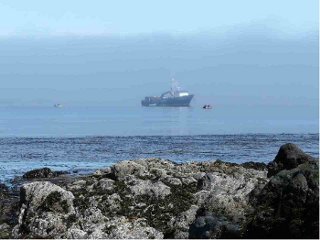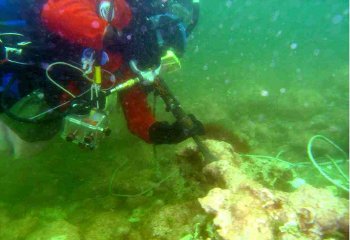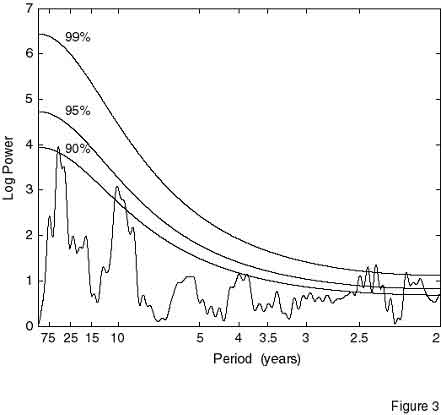Bering Sea sea surface temperature variability
 |
 |
| A 2008 research cruise covering the entire Aleutian Island chain was conducted aboard the R/V Norseman. | Giant coralline red algae were removed from the Bering Sea seafloor via SCUBA using pneumatic chisels (diver shown is collaborator Bob Steneck, University of Maine, USA). Individual plants weigh up to 70kg! |

ABOVE: Annual growth increments of a coralline red algae collected live in the Bering Sea/North Pacific area. This particular specimen has been growing and recording paleoclimates continuously for the past 136 years.

ABOVE: Temperature anomalies revealed by analyzing annual oxygen isotopic composition of above shown specimen. Anomalies distinguish warm and cold phases and correlate with recurring temperature patterns in the northeast Pacific (the so-called Pacific Decadal Oscillation).
 |
LEFT: Multi-taper power spectrum of the above coralline red algal time series showing significant power at ~60, 10, 4, 2.5 and 2.25 years. The power spectrum corresponds to cyclic climate patterns associated with the El Nino-Southern Oscillation and the Pacific Decadal Oscillation. |

ABOVE: Regression of monthly sea surface temperatures against annual stable oxygen isotope time series, indicating that the coralline red algae from the Aleutian Islands record temperature patterns originating in the northeastern and central tropical Pacific. Yellow circle marks location of coralline red algal collection site (computed at climexp.knmi.nl).
